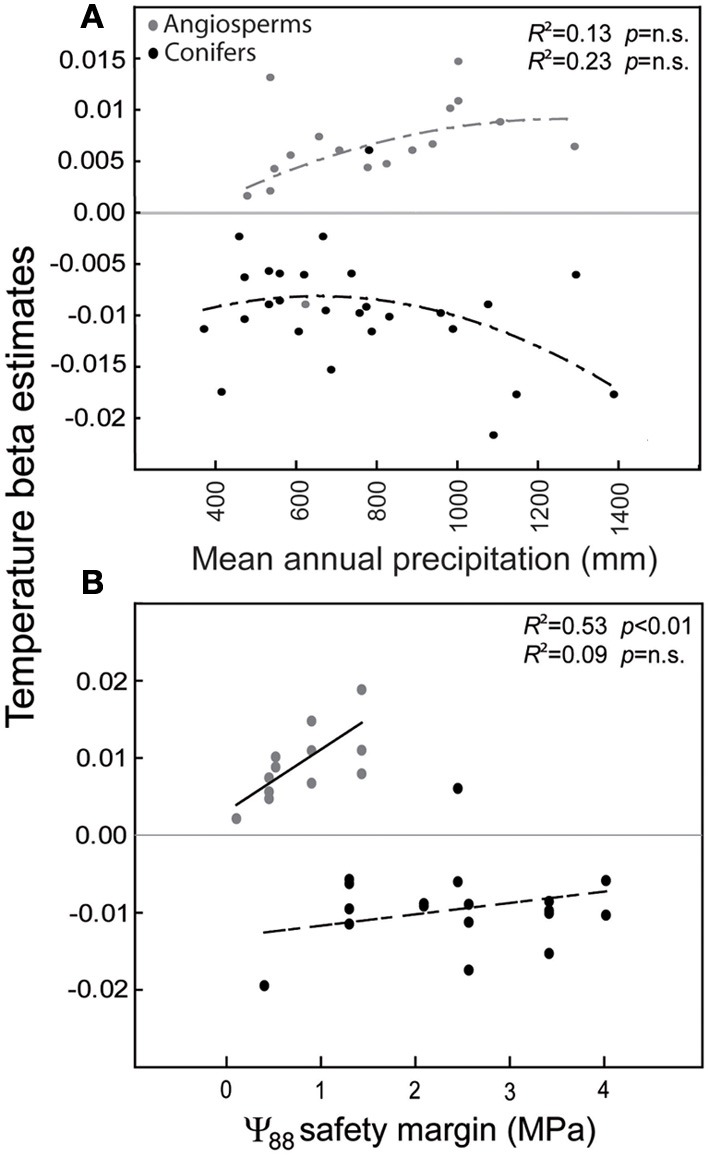Figure 1.

Summary of the variation in the effect of temperature on tree growth along a rainfall gradient (A) and across interspecific differences in hydraulic safety margins (B) in conifers (black dots) and angiosperms (gray dots). The tree species included in the analysis are: Fagus sylvatica, Quercus ilex, Q. pubescens, Q. pyrenaica, Q. robur, Abies alba, Pinus halepensis, P. nigra, P. pinaster, P. pinea, P. sylvestris, and P. uncinata. P. radiata and Q. suber were only included in panel (A) due to a lack of data for hydraulic safety margins. Coll et al., (2013) applied generalized linear models (GLM) to study tree growth responses (dependent variable) and assessed the following independent predictors: (i) climate and topography (Emberger water deficit index, mean annual temperature, terrain slope), (ii) forest stand structure (tree density, basal area), (iii) soil (organic layer depth), (iv) individual tree traits [tree height, diameter at breast height (DBH)], and (v) management practices (e.g., plantations). Beta estimates in panels (A) and (B) show the reported significant effects of temperature on tree growth in GLM analyses (Coll et al., 2013). n.s. means not significant.
